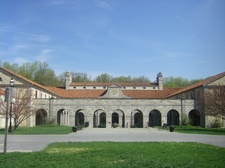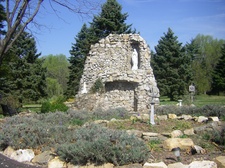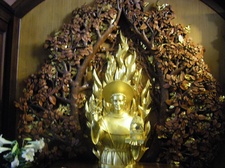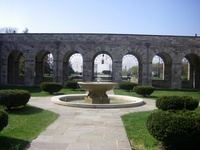You may be wondering why I am asking you to send up some prayers for the Conventual Franciscans. This week two east coast Conventual Franciscan provinces are meeting in a provincial chapter to discuss matters pertaining to their life as Franciscans. A chapter meets every four years. This week the two provinces on the east coast of the USA are deciding by vote the merger of their provinces, no insignificant matter. May the Holy Spirit guide and protect the discussions!
The Conventual Franciscans arrived in the USA in the 19th century to work with the German and then Polish immigrant peoples You can read more their history here
The Conventual Franciscans History.pdf. Fast forwarding through particular histories, about four years ago, the then Minister Provincial Father Canice Connors introduced the idea of merging the two east coast provinces,
Immaculate Conception and
Saint Anthony of Padua, into one; each province has about 100 men in each so we're not talking about hugh numbers of men coming together like, for example, what the Jesuits are doing at the moment (they're moving 10 provinces into 5). This merger will change the face of Conventual Franciscan life in the friaries
and in the many dioceses where the friars serve in the East, especially in some New York and Connecticut dioceses.
You can also follow developments of the world-wide Conventual Franciscan movement on
their website.
The witness of of the Franciscans is necessary for us today and we ought to sustain them by prayer and fraternal relations in their deliberations, today and in the days/years to come. As Pope Benedict mentioned in his Regina Caeli address of April 5, we need to be heralds to the world of God the Father's great plan for the restoration of man: of God's love for man and woman, our resurrection with Christ in glory. In baptism all Christian people are called to announce and to live the divine love; the charism passed down to us from Saint Francis through the Conventuals ought to do the same.

Let me end but calling to mind Holy Father Saint Francis' words to the Friars at the end of his Rule of life which I think may be appropriate for all of us to consider in for our prayer for the Conventuals (and for ourselves):
O most beloved brothers and sons forever blessed, hear me, hear the voice of your Father:
Great things we have promised;
greater have been promised us.
Let us observe the former;
let us aspire to the latter.
Pleasure is short;
punishment, everlasting.
Suffering is slight;
glory, infinite.
Many are called;
few are chosen.
Retribution for all.
Brethren, while we have time, let us do good.
May the Immaculate Virgin Mother of God, Saint Joseph, Saints Francis and Clare of Assisi, Saints Anthony of Padua and Maximilian Mary Kolbe, pray for a favorable outcome of this week's chapter.
 Not long ago President Obama appointed Franciscan Brother Daniel Sulmasy, MD, to the Presidential Commission for the Study of Bioethical Issues. He's universally well-received for his competence, compassion and humor. Oh, yes, the President did appoint a Catholic, a religious and a pro-life member to the commission.
Not long ago President Obama appointed Franciscan Brother Daniel Sulmasy, MD, to the Presidential Commission for the Study of Bioethical Issues. He's universally well-received for his competence, compassion and humor. Oh, yes, the President did appoint a Catholic, a religious and a pro-life member to the commission.







